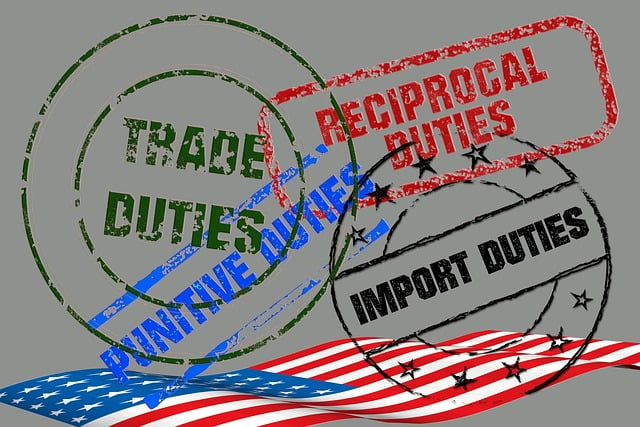Beyond the Price Tag: Indirect Ways Tariffs Can Impact Your Side Hustle

The Impact Of Tariffs On US Ecoomy
Did you know that tariffs can feel like a surprise guest at your side hustle party, showing up uninvited and changing the vibe? While most people focus on the direct costs of tariffs—like higher prices for imported goods—there’s a whole world of indirect impacts that can sneak up on you. Let’s dive into the unexpected ways tariffs can influence your entrepreneurial dreams.
Supply Chain Shenanigans
Imagine your side hustle is a well-oiled machine, and suddenly, a tariff is like throwing a wrench into the gears. Tariffs can disrupt your supply chain in ways you might not expect. Here’s how:
- Increased Costs: If you rely on imported materials, tariffs can inflate your costs. This means you might have to raise your prices, which could scare off customers.
- Supplier Changes: You might need to find new suppliers who are not affected by tariffs. This can lead to delays and quality issues.
- Inventory Management: With fluctuating prices, managing inventory becomes a guessing game. You might overstock or understock, both of which can hurt your bottom line.
For example, a small business that sells handmade jewelry might source beads from overseas. If tariffs increase the cost of those beads, the owner may have to either absorb the cost or pass it on to customers, risking sales. 😬
Consumer Behavior Shifts
Tariffs can also change how consumers behave. Think of it as a ripple effect in a pond. When prices rise, customers may rethink their spending habits. Here’s what to watch for:
- Price Sensitivity: Customers may become more price-sensitive. They might opt for cheaper alternatives or delay purchases.
- Brand Loyalty: If your prices rise, loyal customers might start exploring competitors. Keeping them engaged becomes crucial.
- Market Trends: Tariffs can shift market trends. For instance, if imported goods become too expensive, local products may see a surge in demand.
Take the case of a local coffee shop that prides itself on using imported beans. If tariffs raise the price of those beans, the shop might need to switch to local suppliers. This could attract customers who prefer supporting local businesses, turning a challenge into an opportunity! ☕
Innovation and Adaptation
Sometimes, a little pressure can spark creativity. Tariffs can push you to innovate and adapt in ways you never imagined. Here’s how:
- Product Development: You might find new ways to create or source products that are less affected by tariffs. This can lead to unique offerings that set you apart.
- Cost Efficiency: Tariffs can force you to streamline operations and cut unnecessary costs, making your business leaner and more efficient.
- Market Expansion: You may discover new markets or customer segments that are less sensitive to price changes, broadening your reach.
For instance, a clothing brand that imports fabric might start experimenting with local materials. This not only reduces costs but also appeals to eco-conscious consumers. 🌱
Legal and Regulatory Considerations
Tariffs come with a side of legal and regulatory changes that can impact your side hustle. It’s like navigating a maze blindfolded. Here’s what to keep in mind:
- Compliance Costs: You may need to invest in legal advice to ensure compliance with new regulations, adding to your expenses.
- Trade Agreements: Changes in tariffs can affect existing trade agreements, which may require you to renegotiate contracts.
- Tax Implications: Tariffs can have tax implications that affect your overall financial strategy. Staying informed is key.
Consider a tech startup that imports components for its products. If tariffs change, the startup might need to consult with legal experts to navigate the new landscape, which can be costly but necessary for compliance.
Networking and Community Impact
Finally, tariffs can influence your local business community. Think of it as a domino effect. When one business is affected, others may feel the impact too. Here’s how:
- Collaboration Opportunities: Tariffs can create opportunities for local businesses to collaborate and support each other, fostering a sense of community.
- Shared Resources: Businesses may band together to share resources or negotiate better deals with suppliers, reducing costs collectively.
- Advocacy: Affected businesses might unite to advocate for policy changes, creating a stronger voice in the community.
For example, a group of local artisans might come together to create a cooperative, sharing resources and marketing efforts to combat the effects of tariffs on their businesses. 🤝
Conclusion
Tariffs are more than just numbers on a price tag; they can ripple through your side hustle in unexpected ways. From supply chain disruptions to shifts in consumer behavior, the impacts are far-reaching. Embrace the challenges as opportunities for innovation and community building. Stay informed, adapt, and you might just find that tariffs can lead to unexpected growth in your entrepreneurial journey! 🚀




